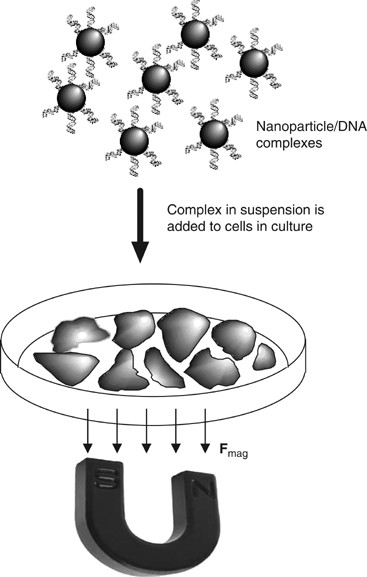
Gene therapy progress and prospects: magnetic nanoparticle-based gene delivery
- Select a language for the TTS:
- UK English Female
- UK English Male
- US English Female
- US English Male
- Australian Female
- Australian Male
- Language selected: (auto detect) - EN
Play all audios:
The recent emphasis on the development of non-viral transfection agents for gene delivery has led to new physics and chemistry-based techniques, which take advantage of charge interactions
and energetic processes. One of these techniques which shows much promise for both in vitro and in vivo transfection involves the use of biocompatible magnetic nanoparticles for gene
delivery. In these systems, therapeutic or reporter genes are attached to magnetic nanoparticles, which are then focused to the target site/cells via high-field/high-gradient magnets. The
technique promotes rapid transfection and, as more recent work indicates, excellent overall transfection levels as well. The advantages and difficulties associated with magnetic
nanoparticle-based transfection will be discussed as will the underlying physical principles, recent studies and potential future applications.
I am supported by a Wolfson Foundation – Royal Society Research Merit award for this study. I thank the UK Cystic Fibrosis Gene Therapy Consortium & The Cystic Fibrosis Trust for funding
support. Professor Eric Alton, Dr Uta Griesenbach, Dr Stefania Xenariou and Dr Stuart McBain are thanked for their helpful discussions.
Institute for Science & Technology in Medicine, Keele University, Hartshill, Stoke-on-Trent, UK
Anyone you share the following link with will be able to read this content: